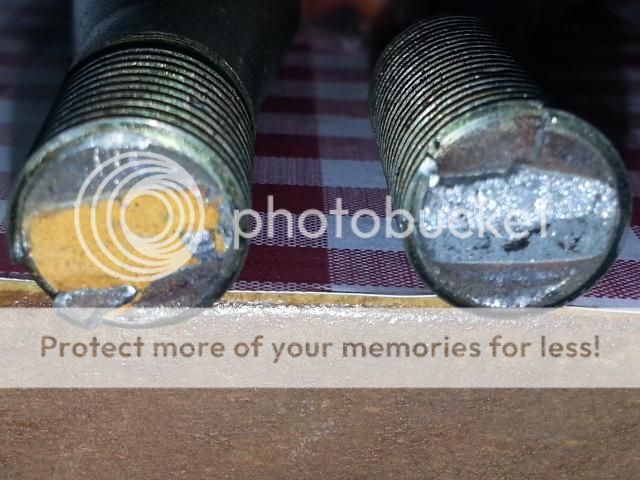You are using an out of date browser. It may not display this or other websites correctly.
You should upgrade or use an alternative browser.
You should upgrade or use an alternative browser.
broken clevis
- Thread starter fordsbyjay
- Start date
fluidfloyd
Active Member
Between my old eyes and flash reflection I am having a hard time seeing the break line. That appears to be 1/2-20 thread that failed. If you could post a picture of the opposite side radius/hairpin in full maybe we could determine a possible cause to fail. Several questions...
#1 Is that clevis chrome or cad plated?
#2 Where did you get these clevis?
#3Power and tire size?
maybe this will give us a starting point.
George
#1 Is that clevis chrome or cad plated?
#2 Where did you get these clevis?
#3Power and tire size?
maybe this will give us a starting point.
George
I agree that the rods should be tied together, but the only way that shock could break the clevice is if it is bottoming out. The travel needs to be controlled (bump stops) or you will continue to have load issues. A shock is only to control travel, not hold up the car. That is a leaf spring or a coil springs job.
fordsbyjay
Active Member
The car is the standard Total Performance kit. It originally had friction shocks and I added the hydraulic shocks a couple years ago. At the time I wondered if that would be too much load for the clevis but I was thinking more along the lines of the wishbone bending not the clevis shearing.. I think a brace from the top to the bottom would help spread the load out but IMO the clevis is meant to have it's load axial along the wishbone not pushing down on it from the weight of the car. Regardless, I have found the entire TP car to be very light duty. I upgraded the steering rods several years ago with larger ones from RPM and I will be looking at adding some beefier wishbones with larger clevis'.
Below is a couple pics I took when I added the shocks.
This first picture was before I chopped up the shock mount I had bought. It did not line up properly so I modified it before welding it to the frame.
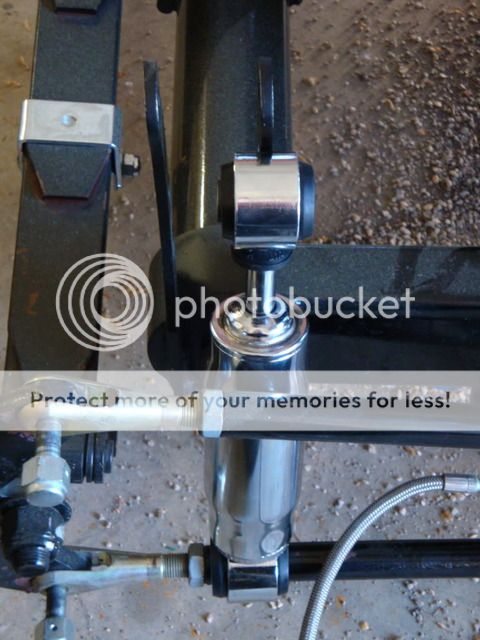
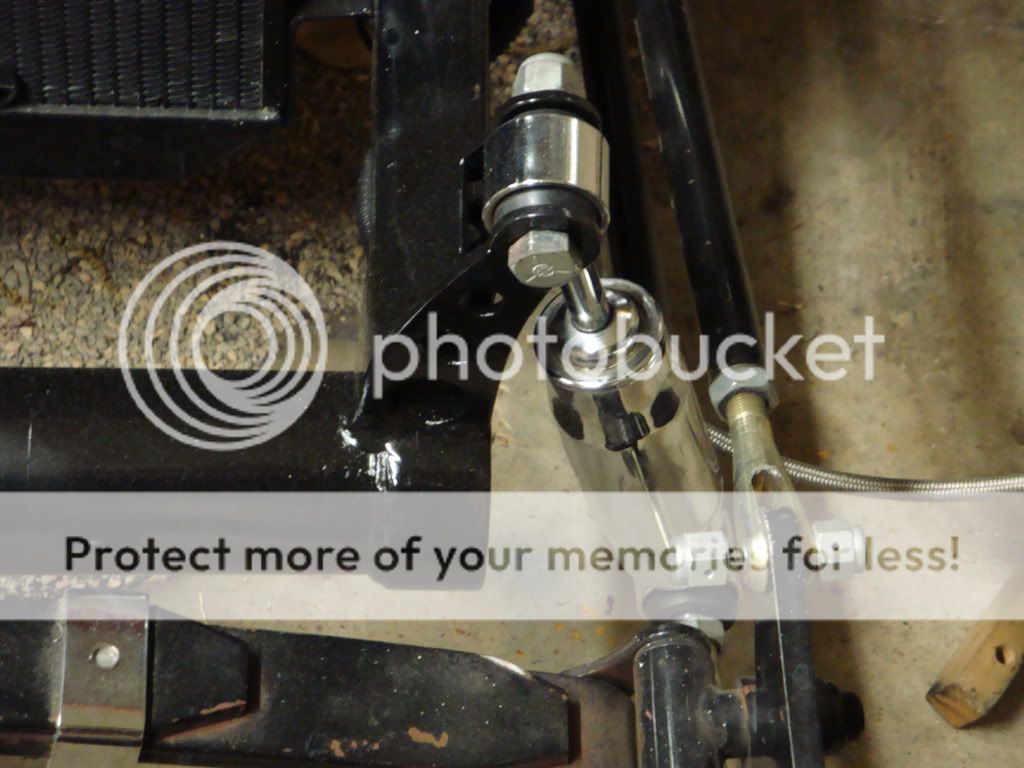
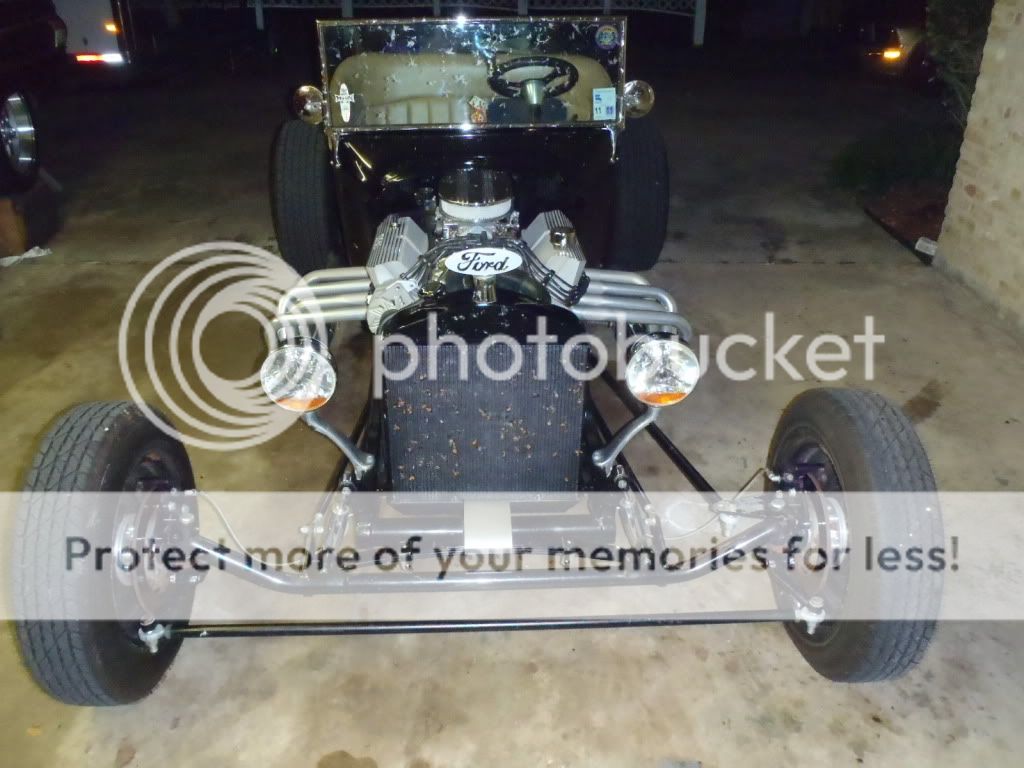
Below is a couple pics I took when I added the shocks.
This first picture was before I chopped up the shock mount I had bought. It did not line up properly so I modified it before welding it to the frame.



fordsbyjay
Active Member
I agree that the rods should be tied together, but the only way that shock could break the clevice is if it is bottoming out. The travel needs to be controlled (bump stops) or you will continue to have load issues. A shock is only to control travel, not hold up the car. That is a leaf spring or a coil springs job.
These shocks only have 3" of travel and I am right in the middle at ride height.
What I am meaning is that the shock will never hold the weight of the car unless the shock bottoms out. Most likely that is what is happening. It is best to have less up travel and more down travel.
Try putting a zip tie on the shaft of the shock once you get back on the road. After driving around with various road conditions check to see where that shock actually compresses to.
I have not seen a front clevis break in that location either, make sure you don't have any binding that may be causing some other effect (does the radius rod need to be muscled to get the bolts lined up? in, out, up or down).
A lot can be learned about how these bars are loaded from just jacking the front and rear of the car up (from under the axle and rear housing) off the ground around 1 1/2", set some stands tight under the front and rear of the frame and let the car back down so the wheels are back on the ground. This is taking most of the weight off the suspension but still allowing you to take the radius rod bolts to the frame off one at a time. Unbolt the rod from the frame and see what happens. Does it just stay in the same location so you can pull the bolt out by hand or does it require you to tweak stuff to get the bolt out or back in? Put that bolt and nut back on and try the opposite side, check what that does, the same or the opposite? Do the same with the rear suspension, this could tell you a lot.
The bolts hole should be lined up and be able to be put in with just minimal force/tapping not a mallet and forcing the rods up or down or you will have a preload issue.
Fordsbyjay, this is not aimed at you but your situation, and can remind everyone that this stuff requires a bit of thinking sometimes.
Try putting a zip tie on the shaft of the shock once you get back on the road. After driving around with various road conditions check to see where that shock actually compresses to.
I have not seen a front clevis break in that location either, make sure you don't have any binding that may be causing some other effect (does the radius rod need to be muscled to get the bolts lined up? in, out, up or down).
A lot can be learned about how these bars are loaded from just jacking the front and rear of the car up (from under the axle and rear housing) off the ground around 1 1/2", set some stands tight under the front and rear of the frame and let the car back down so the wheels are back on the ground. This is taking most of the weight off the suspension but still allowing you to take the radius rod bolts to the frame off one at a time. Unbolt the rod from the frame and see what happens. Does it just stay in the same location so you can pull the bolt out by hand or does it require you to tweak stuff to get the bolt out or back in? Put that bolt and nut back on and try the opposite side, check what that does, the same or the opposite? Do the same with the rear suspension, this could tell you a lot.
The bolts hole should be lined up and be able to be put in with just minimal force/tapping not a mallet and forcing the rods up or down or you will have a preload issue.
Fordsbyjay, this is not aimed at you but your situation, and can remind everyone that this stuff requires a bit of thinking sometimes.
While I was engineering the front suspension on my car I was having a difficult time locating a place for the shocks also. I had seen them connected to radius rods before and it was tempting because it would have been easy for me. But something about that just bothered me. Now I know why. I would think that even if the shock was not bottoming out, the constant force up and down from the friction of the shock alone would be enough to eventually fatigue and break it.
choppedtop
Well-Known Member
I think the up travel had to do the damage. Should have been able to tell by looking at the clevis threads which way it was broken. The car would have almost have to be air born to break it down wards. Just my guess.
Lee
Lee
fletcherson
Well-Known Member
From looking at the pic, the clevis appears to be under constant fatigue and vibration, especially with the lever effect. I could imagine it failing from metal fatigue without bottoming out, but that would explain it. What is it made from? What grade, etc... It could be a bad part, or it may just need to be stronger or re designed. Does the clevis pivot where it meets the shock when it travels, or just remain horizontal? Nice car, by the way.I think the up travel had to do the damage. Should have been able to tell by looking at the clevis threads which way it was broken. The car would have almost have to be air born to break it down wards. Just my guess.
Lee
Swampdog
Active Member
Jayson lives in Louisiana. My T Bucket becomes airborne on I-10 locally when coming off overpasses at 70-75 MPH. Any slower you are a traffic hazard. The back tire will chirp when they come back down.The car would have almost have to be air born to break it down wards. Just my guess.
roadmonster
Member
The shocks should mount to spring perch or bat wings. Clevises will continue to break with shock mounted to radius rod.
choppedtop
Well-Known Member
Mine mount to the spring hangers, and have more upward travel than downward.
fordsbyjay
Active Member
When I looked at shock ideas I found this method on some old posts and have seen other cars like this. I need to pull it off for a closer inspection I have just had some other vehicle break downs this week that I need to take care of first.
ellis8500
Member
Looks like a classic case of metal fatigue due to a near constant vibration load. As I've found with my car; there are no "Smooth" roads. There is almost always some up and down shock load in the suspensions since they are so stiff. The cut threads on the clevis shank provide the perfect place for a crack to form and then propagate over time. The shock dampening causes a small, but ever present bending moment on the clevis shank at the jam nut interface. Others have used this location for a shock mount and have not had a break for a variety of reasons. Perhaps it's a show car and is rarely driven. Perhaps it just hasn't been driven enough for the break to occur. Perhaps the clevis that broke already had a defect. We see cracks form in airplane structures due to vibration and flex loads. Usually doesn't happen on every plane of the same model, sometimes it does. Sometimes we read about that in the news. Best design thought is to only subject a part to the loads for which it was designed. A clevis is designed for axial loads only, push-pull, no others. Same for spherical rod ends.
fordsbyjay
Active Member
roadmonster
Member
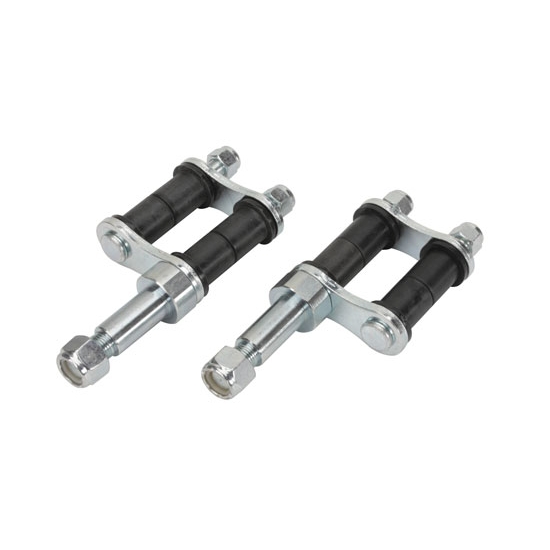
You may have to adjust the upper mount.
Similar threads
- Replies
- 6
- Views
- 245




